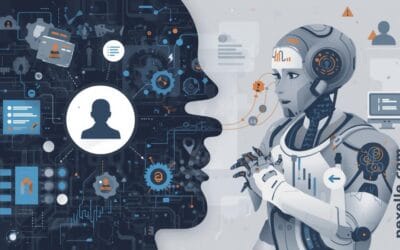The Impact of AI on Learning New Languages

In recent years, Artificial Intelligence (AI) has significantly changed various aspects of human life, and language learning is no exception. AI-powered tools and technologies have revolutionized the way people learn and practice new languages, making the process more efficient, personalized, and accessible.
1. Personalized Learning Experience
One of the most notable benefits of AI in language learning is its ability to offer a personalized learning experience. Traditional language learning methods, such as textbooks or classroom-based instruction, often follow a fixed curriculum that may not cater to the individual needs of each student. AI-powered applications, however, adapt to the learner’s pace, proficiency level, and learning style. These tools analyze the user’s progress and adjust the lessons accordingly, ensuring that learners receive content that matches their current abilities.
For instance, language apps like Duolingo or Babbel use AI algorithms to track progress and suggest lessons that target specific weaknesses or areas for improvement. As learners continue their studies, the AI system fine-tunes the material to keep them challenged but not overwhelmed, which is crucial for maintaining motivation.
2. Speech Recognition and Pronunciation Improvement
Another major advantage of AI in language learning is the use of speech recognition technology. Many language learning applications now include features that help learners practice their pronunciation. By using AI algorithms to analyze the sounds and phonetic patterns of speech, these apps can provide real-time feedback on pronunciation, helping learners improve their spoken language skills.
For example, Google Translate’s voice recognition feature and language apps like Rosetta Stone employ advanced AI models to evaluate pronunciation accuracy. These systems can detect subtle errors in tone, intonation, and accent, offering corrective feedback to help learners sound more like native speakers.
3. Natural Language Processing (NLP)
Natural Language Processing (NLP) is another AI technology that has advanced language learning tools. NLP enables machines to understand, interpret, and generate human language in a way that was once only possible for humans. With NLP, AI-powered platforms can translate text and audio more accurately, provide contextual meanings, and even engage learners in conversation practice.
Chatbots, powered by NLP, are becoming increasingly popular for language learners. These AI-driven chatbots can simulate real-life conversations, allowing users to practice speaking and writing in the target language. Chatbots can also provide instant corrections and feedback, which helps learners improve their conversational skills.
4. Translation Tools and Real-Time Assistance
AI has greatly enhanced translation tools, making them more reliable and real-time. Platforms like Google Translate and DeepL use AI to offer near-instant translation between languages, allowing learners to understand and practice foreign languages more easily. With real-time translation capabilities, learners can access foreign content without the need for manual translation, and they can communicate with speakers of other languages more effortlessly.
Real-time assistance is especially useful for travelers, international business professionals, or anyone who needs to quickly bridge language barriers. Additionally, this accessibility encourages learners to engage with content in their target language, fostering an immersive learning experience.
5. Gamification and Engagement
AI also plays a key role in gamifying language learning, which significantly boosts engagement. Many AI-based language apps incorporate game-like features that encourage learners to complete tasks, earn points, and level up as they progress. This gamification aspect makes learning more fun and interactive, motivating learners to continue practicing and improving their language skills.
These AI-driven games and activities also promote a sense of achievement, as users can track their progress through visual markers like progress bars, badges, and leaderboards. This gamified approach helps reduce the monotony of traditional study methods and keeps learners engaged over the long term.
6. Learning Anytime, Anywhere
AI-powered language learning tools are typically mobile-friendly, which means learners can study at their own convenience, anytime and anywhere. With applications available on smartphones, tablets, and computers, learners no longer need to attend scheduled classes or sit with a tutor for hours. Instead, they can practice vocabulary, grammar, pronunciation, and even engage in real-time conversations during their commute, at home, or on vacation.
This flexibility in learning times and locations opens up language learning to a wider audience. People who may not have had access to formal language education in the past now have the ability to learn at their own pace and convenience.
Conclusion
Artificial Intelligence has transformed the landscape of language learning, making it more accessible, efficient, and tailored to individual needs. From personalized lessons and real-time speech feedback to immersive language practice and advanced translation tools, AI offers numerous benefits that enhance the overall learning experience. As AI continues to advance, it is likely that its impact on language learning will only grow, offering even more innovative solutions for learners around the world.
Source : Medium.com




